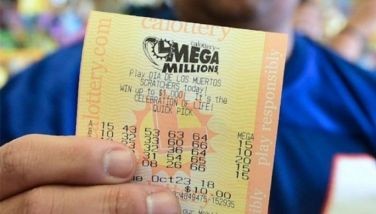Virgilio Almario and his Bulacan
MANILA, Philippines - National Artist for Literature Virgilio Almario recalls that he was five years old when he wrote and recited his first original poem.
“I was only five years old when I asked my mother if I could attend school,” he shares. At first, he was a saling pusa because his classmates were older than him. His teacher then had to pass a letter of recommendation to the Department of Education in the Bulacan Capitol for him to qualify to study at a much younger age.
Despite his youth, he topped his class. And as valedictorian, he was tasked to deliver a piece for his first grade graduation ceremony at the Camias Elementary School in Bulacan, something he did with great ease as he was already able to read and recite verses at this young age.
 With the presence of SM, Bulakeños SM City Baliwag has brought great shopping, leisure, and entertainment closer to Bulakeños.
With the presence of SM, Bulakeños SM City Baliwag has brought great shopping, leisure, and entertainment closer to Bulakeños. This was definitely an auspicious literary debut for Almario, who, since that time, has become a great poet, literary critic, editor of anthologies and children’s literature, as well as cultural administrator and propagator, with his long affiliation with the academe and his stint as executive director of the National Commission of Culture and the Arts.
Also known as Rio Alma, he has written more than a hundred poems and stories as well as numerous essays on literature and history published in national and international publications. As executive director and editor of Adarna books, he has spearheaded the publication of 50 children’s storybooks in the Aklat Adarna series.
With works that plumb the unvisited depths and undiscovered territories of the Filipino imagination, Almario has been honored with many awards, including the National Artist for Literature on June 2003. He has also received the Centennial Award for Literature by the Cultural Center of the Philippines in 1998; the Southeast Asia Write Award in Bangkok in 1989; Palanca Memorial Awards for poetry and essay in 1970, 1979, 1984, 1990; and the CCP Literary Awards for poetry and essay in 1975, 1979 and 1984. Almario was also named one of the Ten Outstanding Young Men (TOYM) in 1980.
 With Bulacan playing a major part in his formative years, glimpses of Almario hometown appear in his works. Apart from Mga Retrato at Recuerdo, he also wrote about Malolos and Barasoain in his book, Huling Hudhod ng Sanlibong Pagbabalik at Paglimot Para sa Pilipinas Kong Mahal.
With Bulacan playing a major part in his formative years, glimpses of Almario hometown appear in his works. Apart from Mga Retrato at Recuerdo, he also wrote about Malolos and Barasoain in his book, Huling Hudhod ng Sanlibong Pagbabalik at Paglimot Para sa Pilipinas Kong Mahal. Despite his many honors and achievements, he remains close to his Bulakeño roots, often visiting his home in Camias, San Miguel. Here, he takes us around his Bulacan, his SM.
“As a young boy, my love for reading was greatly influenced by a wood carver from our neighborhood who had a room full of reading materials like Liwayway, something rare at that time. You can imagine that that was like a treasure trove for me, and I would sneak into his room, and browse the comic books. Eventually, much to my and my mother’s surprise, I eventually learned how to read.”
“I am proud to be a Bulakeño. Almost all my books have a bit of Bulacan, the province of my childhood, in it. Mga Retrato at Recuerdo, a coffee table book published in 1986, contains poetry and photos about traditions like fiestas and cockfighting in my hometown. There was a photographer who also had his roots in San Miguel who helped me with the book. We worked together for about three months, going to Bulacan every weekend to take photos.”
“Almario is looked up to by young poets and writers as a strong influence, a model and mentor. He is acknowledged by peers and contemporaries as a purveyor of new ideas, and a navigator for new directions in Tagalog poetry and literary scholarship.” — Quote from Alfred A Yuson, The Philippine STAR, June 10, 2003.
Rio Alma “exemplifies the artist who has gone beyond the perfection of his craft. Aware of his own responsibility and role in Philippine culture, he has become a moving force.” — Quote from Alfred A Yuson
 Photobar shows the Tecson-Mendiola Mansion, the home of Colonel Simon Tecson of the Revolutionary Government. It was where General Emilio Aguinaldo stayed after the signing of the Pact of Biak na Bato in 1897 and his bed is still kept in the mansion.
Photobar shows the Tecson-Mendiola Mansion, the home of Colonel Simon Tecson of the Revolutionary Government. It was where General Emilio Aguinaldo stayed after the signing of the Pact of Biak na Bato in 1897 and his bed is still kept in the mansion. “The Sevilla Mansion is the only three-story ancestral home in our town. The local elite would usually hold a Grand Ball here especially in the third floor of the house.”
“If I would bring visitors around Bulacan, I would bring them to the heritage houses in San Miguel. Most of the owners of these homes are hacienderos — the Tecsons, Violas, de Leons, and Sevillas. Back then, we used to call the place Calle Real, and it is said that many historic events took place here.”
“I was exposed to the arts, mainly in oral literature at a young age as zarzuelas, fiesta celebrations, and seasonal plays like the Panuluyan during Christmas and Pangangaluluwa during All Saint’s Day, were very popular in our town. When the most popular duplero in town died, I witnessed a lot of popular poets in nearby towns perform a duplo, a form of poetic joust. The performance was very long and lasted until the wee hours of the morning, but I stayed on to listen.”
“Only Bulacan produces the best-tasting pastillas because it is made of pure carabao’s milk. That is the reason why the town’s name is San Miguel de Mayumo. ‘Mayumo’ means sweet. I also remember that fruits preserved in jars were made here. There were carvings on the fruits, including the names of people. My mother used to have a pantry full of carved fruits. If the industry of carved fruit preserves would come back, I’m sure tourists would buy loads of it.”
 Nanay Luz M. Ocampo, a 90-year-old Bulacan artisan, makes special pastillas wrappers and dayap burdado with pastillas filling. During special occasions, Bulacan artisans will make dayap bordado (embroidered lime rinds which are hallowed out and filled with pastillas), and the famous cutout wrappers are made of colorful Japanese paper.
Nanay Luz M. Ocampo, a 90-year-old Bulacan artisan, makes special pastillas wrappers and dayap burdado with pastillas filling. During special occasions, Bulacan artisans will make dayap bordado (embroidered lime rinds which are hallowed out and filled with pastillas), and the famous cutout wrappers are made of colorful Japanese paper. “I go to SM to watch movies and check out sales.”
“Folk industries must be continued in the province to sustain it. Among these are woodcarving, basket weaving, buntal hat making, burda de oro, and furniture. My mother was a burdadera. During that time, paper napkins were not yet used and big high-end restaurants used cloth napkins. We even exported these to New York. I remember that our house was full of napkins, which my mother would ask women from our community to work on.”
 Bulacan’s best: buntal hats, burda de oro, basket weaving, and furniture with bone inlay using tadyang ng kalabaw from Rhion’s Furniture in Baliwag.
Bulacan’s best: buntal hats, burda de oro, basket weaving, and furniture with bone inlay using tadyang ng kalabaw from Rhion’s Furniture in Baliwag. 














